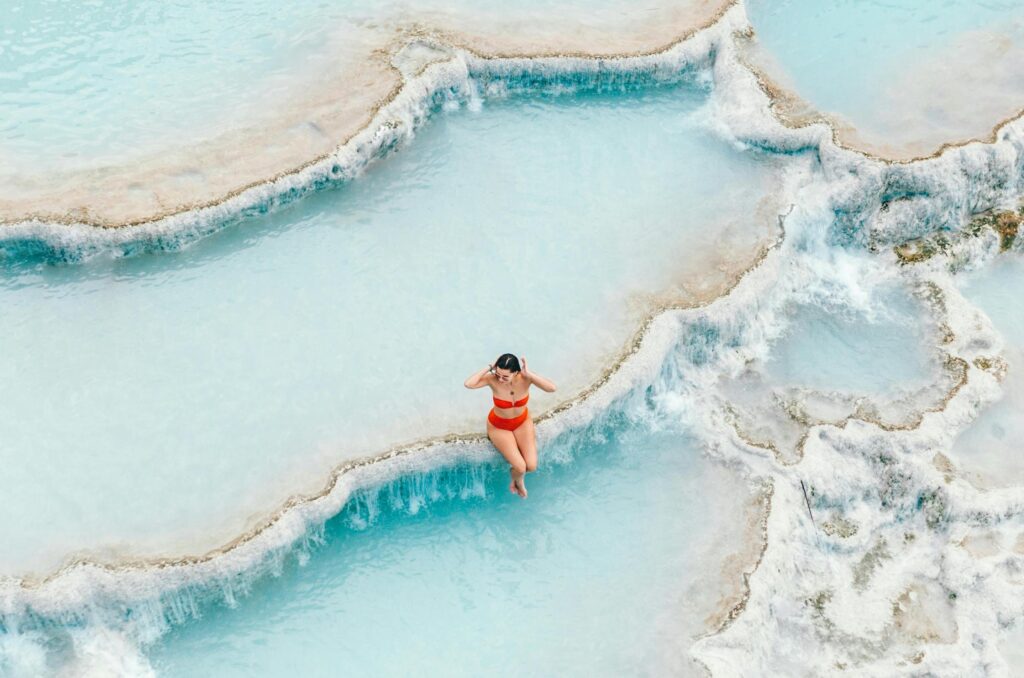San Miguel De Allende
CONTACT
submit a CALENDAR REQUEST
connect with us
Heading
home
Sayulita
ABOUT
Wellness Tourism in 2025: The Rise and the Ripple Effect
April 15, 2025

Welcome to the Era of Intentional Travel
Wellness tourism isn’t just a buzzword anymore—it’s a full-blown movement. From digital detox retreats in the mountains of Mexico to Ayurvedic healing journeys in Bali, travelers in 2025 are seeking more than just a beach and a margarita. They want meaning. They want to feel better, sleep deeper, connect more authentically, and return home not just refreshed but transformed.
And the numbers don’t lie. According to the Global Wellness Institute, wellness tourism is expected to surpass $1.3 trillion globally by the end of 2025, with steady double-digit growth year over year. So what’s behind this boom, and why should you care? Let’s dive in.
What Exactly Is Wellness Tourism?
Wellness tourism is travel with the primary purpose of promoting health and well-being through physical, psychological, and spiritual activities. This can mean anything from yoga retreats and hot spring vacations to spa getaways and biohacking weekends.
Types of wellness travel in 2025:
- Digital detox retreats
- Fitness bootcamps and adventure wellness treks
- Mental health and emotional healing journeys
- Plant medicine and psychedelic-assisted therapy experiences
- Luxury wellness resorts with bespoke treatments
- Sustainable eco-retreats rooted in local culture
- Medical wellness combining diagnostics, longevity treatments, and aesthetics
People are choosing wellness travel not just as a break but as an investment in themselves.
What’s Fueling the Surge in Wellness Tourism?
- Post-pandemic perspective shifts: After COVID-19, people are prioritizing health more than ever before. We’ve seen firsthand how fragile well-being can be.
- Workplace burnout: The rise of remote work has blurred boundaries. Travelers are seeking retreats to reset and recover from screen fatigue and stress.
- Tech and social media overload: Constant connectivity has people yearning for disconnection and real-life connection.
- Mental health awareness: Emotional well-being is now a top priority, not an afterthought. This shift has fueled demand for healing-centered experiences.
- Cultural curiosity: Travelers want authentic, localized experiences that also support their personal growth. They crave wisdom from ancient traditions and indigenous healing.
Where Wellness Tourism Is Thriving in 2025
While destinations like Bali, Costa Rica, and Tulum have long been wellness hotspots, new regions are rising.
Top emerging wellness destinations:
- San Miguel de Allende, Mexico: With its colonial charm and growing wellness scene, it’s drawing creatives and healers from around the world.
- Portugal: Known for its food, surf, and slower pace of life, Portugal is now a hub for wellness retreats and regenerative travel.
- Japan: Blending futuristic tech with ancient practices, Japan is leading in longevity-focused wellness experiences.
- Iceland: Harnessing nature’s healing powers through geothermal spas, breathwork in caves, and arctic mindfulness practices.
These destinations offer something deeper: connection to nature, access to traditional healing practices, and a sense of cultural integrity.
The Economic and Social Ripple Effects
Wellness tourism doesn’t just benefit the traveler—it has a major impact on local communities and economies.
Positive impacts include:
- Supporting small businesses and local artisans
- Reviving interest in traditional and indigenous wellness practices
- Encouraging sustainable tourism development
- Creating meaningful employment opportunities
But it comes with responsibilities. Ethical wellness tourism means:
- Partnering with local practitioners rather than appropriating traditions
- Ensuring that wellness offerings are accessible, not just exclusive
- Being conscious of environmental footprints
Tech Meets Wellness in 2025
Technology is shaping the way we engage with wellness tourism.
Trends to watch:
- AI-powered wellness itineraries: Apps that customize your trip based on biometric data
- Wearable integrations: Track how a retreat affects your HRV, sleep, and stress levels
- Virtual pre-retreat prep: Online classes, therapy, or coaching to enhance your in-person experience
- Immersive healing: VR used in meditation, trauma healing, and even sound therapy sessions
Wellness tech is enabling personalization at scale—and helping people stay committed long after the retreat ends.
What Travelers Want in 2025
Today’s wellness traveler is informed, intentional, and discerning. They’re not just looking for a good view. They want:
- Transparency in business practices
- Qualifications of facilitators and therapists
- Clean, organic food that aligns with dietary needs
- Safe environments for emotional exploration
- Community, connection, and long-term transformation
They’re also looking for convenience. Booking wellness experiences should be as easy as hailing a ride—enter wellness apps and platforms tailored to this growing need.
How to Ride the Wave—Whether You’re a Traveler or a Wellness Entrepreneur
If you’re a traveler:
- Research beyond the buzz. Read reviews, look into credentials, and seek destinations with soul.
- Book experiences that align with your personal goals—whether that’s relaxation, healing, or personal development.
- Ask how your trip supports local communities.
If you’re in the wellness industry:
- Collaborate with local experts and co-create authentically
- Offer hybrid experiences (in-person + digital follow-up)
- Prioritize inclusivity and accessibility
- Leverage tech, but keep the heart of wellness human
Wellness Tourism Isn’t a Trend—It’s a Lifestyle Shift
2025 marks a turning point. Wellness is no longer a luxury; it’s a necessity. People are building their travel around healing, growth, and holistic well-being.
Whether you’re planning your next wellness escape or creating experiences for others, one thing is clear: The future of travel is intentional, inclusive, and transformative.
So, where will wellness take you next?
Download our free EnForma app for upcoming wellness retreats, events and services to help get the best out of life.